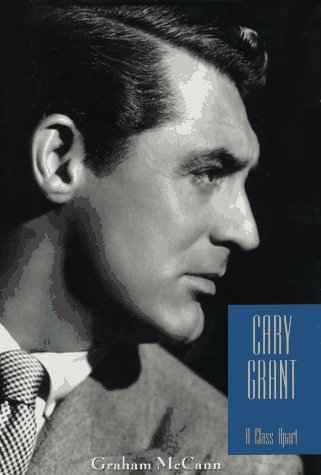
This biography and filmography is based on the book by Graham McCann: Cary Grant – A Class Apart. The hardcover edition was published in 1997 by Columbia University Press, 348 pages (Amazon.com, Amazon.co.uk, Amazon.de, Amazon.fr).
Cary Grant was born as Archibald Alexander Leach in Horfield, Bristol, England, in 1904. The irony is that the man who taught the elite how a modern gentleman should look and behave was of working-class origin. His father, Elias, was a tailor’s presser by trade, working in a clothing factory, a good-looking man and “at his happiest at the centre of light-hearted social occasions”. He had a reputation as a womanizer. Archie’s mother, Elsie, was “a short, slight woman with olive skin… and a slightly cleft chin; she came from a large family of brewery labourers, laundresses and ships’ carpenters.”
They had married in 1898. Four years before Achie Leach was born, their first child had died two days before his first birthday. The loss left Archie’s mother, then 22, “seriously depressed and withdrawn”. The family doctor advised them to have another child. They did so and Archie was to be their only child.
Because of Archie’s circumcision there were unfounded rumors invented by the biographers Higham and Moseley that his “real” mother was a mysterious Jewish woman called “Lillian”. There is no documented evidence for that. And there are no Jewish ancestors in either Archie’s father’s or mother’s family tree.
Elsie believed in her only son and managed, on an irregular basis, to send him to piano lessons. Archie regularly went to the cinema where he was most fond of slapstick comedies with stars like Charlie Chaplin, Chester Conklin, Mack Swain and others. According to McCann, “these occasions were probably the only times when he had the opportunity to establish any real rapport with his father…” They also went to the theatre. Archie was enchanted and he visited it whenever he had the opportunity.
When Archie was 9, coming home from school, he discovered that his mother had disappeared. She had “grown stranger, more inpredictable in temperament and behaviour” over the last months. Elias had committed her to the local lunatic asylum, the Country Home for Mental Defectives in Fishpond. Archie – as he said himself later – was probably told that his mother had gone to a local seaside town for a short holiday. She died in 1973. Archie had a somewhat difficult relationship with her because she was stubborn and had a sometimes misplaced sense of independence. Although, several times during his career, he asked her to join him in the United States, she remained in Bristol.
At the time Elsie was sent to the asylum, Elias had a mistress, Mabel Alice Johnson. Archie was not supposed to know about her and only discovered his father’s “second family” after the latter’s death as a result from his alcoholism at the end of 1935. Archie and Elias went to live with Elias’ mother, Elizabeth, whom Archie later remembered as “a cold, cold woman”. After years of double life, Elias and Mabel moved together and had a child.
At 11, bright Archie won a scholarship to Fairfield Grammar School, which he entered in 1915. But Archie had to pay for the school uniform, books and more. His father gave him little money and, as a result, his aspirations for higher education faded.
In his second year at Fairfield, Archie became friends with an electrician who helped out as a part-time assistant at his school. The unknown man worked at the Hippodrome, Bristol’s newest variety theatre. He invited Archie to the theatre he had helped to wire. Archie quickly became an assistant to the technicians. The electrician introduced Archie to the manager of the Empire, another theatre, where he assisted the men who worked the spotlights. He learned a lot about showbiz. One evening, he accidentally misdirected the follow spot beam and revealed an illusionist’s trick – he used mirrors. Archie’s unofficial job ended abruptly. But Archie reappeared at the Hippodrome as a backstage messenger.
Shortly after this incident, Archie was invited by Bob Pender to join his group of comedians as an apprentice. The story goes that Archie ran away from home to join the Pender troupe. A week later, he was brought back home by his father. In March 1918, Archie was expelled from Fairfield for an unclear reason. He had been inattentive, irresponsible and incorrigible, a discredit to the school. Three days later, he rejoined the Bob Pender’s troupe.
Bob Pender was a man in his 40s, “one of the most experienced and versatile physical comedians in England at that time.” His wife Margaret was a former ballet dancer at the Folies Bergère in Paris. Archie lived with the Penders and other young comedians in Brixton, London and in boarding-houses on the tour-circuit for two years.
In 1920, the Pender troupe was engaged for an appearance in New York, an extraordinary chance for all the young performers. Archie was part of the 8 out of 12 boys to be part of the adventure. On the boat to America, Archie met Douglas Fairbanks sr. and Mary Pickford. He stayed in touch for many years with Fairbanks, who was a role model for him at that time.
In New York, the Pender troupe appeared at the Hippodrome, then the world’s largest theatre with a revolving stage that could accommodate several hundred performers at a time and employed a ballet of 80, a chorus of 100 and 800 backstage employees.
In the 1920s, vaudeville theatres were attracting huge crowds. There were elaborate stage shows in order to compete with the growing cinema phenomenon. It was a hard but invaluable school for Archie, who learned acrobatic tricks, drunken walks, dance steps and illusions. After 455 performances, their show, Good Times, closed in April 1921. The troupe began touring America. By April 1922 however, Pender had run out of bookings and decided to return to Britain. But several members of the troupe, including Archie, stayed in America.
Archie Leach managed to get a job with George C. Tilyou, whose family owned and operated the Steeplechase Park on Coney Island. Archie had to walk around on six-foot-high stilts, advertising the race track. Then, the Hippodrome’s owner gave him and other former members of the Pender troupe a job in the variety show Better Times. Archie was part of “The Walking Stanleys”. When the show closed in 1923, the troupe prepared for a tour which led them to Canada and the West Coast in 1924. Until then, Archie had never spoken a word on stage. He decided to change that.
He met Reginald Hammerstein who convinced him to try musical comedy. He took vocal lessons and, in 1927, Hammerstein’s uncle Arthur engaged him for his first role in a Broadway show, Golden Dawn, then a second in another musical, Polly. Although it was not a success, it opened the doors to future engagements for Archie.
Marilyn Miller, a popular musical comedy star, chose him to replace her current leading man in her show, but Hammerstein did not let him go to his rival Ziegfeld. Instead, he sold Archie’s conract to J.J. Shubert, who, together with his brother Lee, was Broadways biggest theatrical producer at that time. Archie’s first role came in the musical Boom-Boom, which opened in New York in January 1929. Leach already made $350 per week. Archie was even screen-tested at Paramount’s Astoria Studio, but was not offered a contract. Instead, he remained with the Shuberts for another three years. He now made as much as $450 per week and bought himself a Packard Sport Phaeton, then considered one of the finest American cars.
Archie toured with a show called The Street Singer, which finished in January 1931. It flopped and was one of the reasons why the Shubert Corporation had to file for receivership in 1931. Half of all Broadway theatres closed. The only work Leach could find was at the open-air Municipal Opera in St Louis, Missouri, where J.J. Shubert produced a series of musical revivals.
Back in New York, Archie was engaged for a small part in the Paramount movie Singapore Sue. This was the beginning of his movie career, because the studio offered him a five-year contract. Archie arrived in Hollywood in January 1932. He had to change his name. At a dinner, a first suggestion was Cary Lockwood, the name of a character he had played in Nikki. But there was already an actor named Lockwood. The studio advised him to chose a short name. Archie was given a list and chose Grant. When Archie was 28, Cary Grant was born.
He was intended by Paramount to be a sort of cut-price Gary Cooper. This was a common studio tactic to remind their stars that they were not irreplaceable. Cary Grant was intended to become a romantic star in more modest movies. He was immediately cast in two films simultaneously, This Is The Night and Sinners In The Sun.
Archie had a new name, but in order to have his own movie career, he had to reinvent himself. Later, he recalled that among the models for his image of the elegant and modern gentleman were the older English actors Sir Gerald DuMaurier and A.E. Matthews. But above all, Noël Coward’s perfomance in Private Lives had inspired him.
Cary Grant’s first important movie came with Blonde Venus in 1932, a film by director Josef von Sternberg, starring Marlene Dietrich. Von Sternberg changed Grant’s hair parting from the left to the right. And Cary kept it that way ever after. The “new ramrod-straight parting… became the single most simple and straightforward thing about him…” (McCann). Grant was inexperienced, lacked confidence and did not enjoy working with von Sternberg. He was miscast. But Blonde Venus was a helpful movie for an ambitious young actor.

She Done Him Wrong, released in 1933, saw him act aside Mae West. The movie was an adaptation of West’s stage success Diamond Lil from 1928. Shot in 18 days in November 1932, it earned $2 million in the US alone and saved Paramount from bankruptcy (DVD from Amazon.com, Amazon.co.uk).
In 1933, Cary Grant became engaged to Virginia Cherill, who had played the blind girl in Charlie Chaplin’s City Lights. In February 1934, they were married in England. Virginia left him at several times and a year later, they divorced. A single man again, Cary Grant moved into a house together with Randolph Scott. There were rumours about Grant’s alleged bisexuality, but there is no evidence. If he had had homoerotic feelings and wished to hide it, he would certainly not have lived together with a man for years.
In 1934-35, Grant shot several movies. Since they had to be released first, he got some time off from Paramount and returned to England, where he filmed The Amazing Quest. During the filming, his father died. Cary still did not not about the whereabouts of his mother – he is supposed to have discovered it only a few years later.
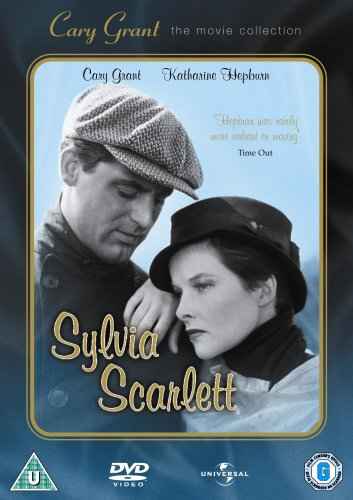
In 1936, Sylvia Scarlett, according to McCann one of Grant’s worst movies, was released (Amazon.com, Amazon.co.uk). Directed by George Cukor and co-starring Katharine Hepburn, the film became RKO’s worst box-office failure of the year. The extraordinary thing about Sylvia Scarlett was how Grant managed to emerge with an enhanced reputation from this disaster. He played an Englishman and his acting was the only reason to watch this movie. He seemed “liberated” and critics were impressed. It was Grant’s ticket to leave Paramount.
Cary Grant had been unhappy for some time with the scripts Paramount gave him and refused to renew his contract – Paramount had only agreed to raise his salary to $3,500 per week, but would not give him script and project approval. Gary Cooper had been the star in front of his nose who could chose before him. Their rivalry had increased in subsequent years. After his 21st movie, Cary decided not to commit himself exclusively to any one studio anymore. He became a freelancer at the time in which the studio system ruled Hollywood. It was a risky step which paid off, but included some failures too. The Howards of Virginia (1940) was, along with Sylvia Scarlett, the worst movie he ever made, featuring his worst performance, according to McCann. Grant did not belong in costumes, as he realized himself. He also refused some good scripts, e.g. in 1954 the remake of Cukor’s A Star is Born – a role accepted by James Mason and awarded with an Oscar nomination.
Cary Grant was not only an accomplished actor, but also a producer and businessman. Douglas Fairbanks recalled that, while shooting Gunga Din, Grant used to do a lot of currency trading (arbitrage), buy Japanese yen and sell English pounds every morning before going to work. Grant convinced Stanley Fox to represent him exclusively. They formed a series of companies in order to produce movies.
The first movie Grant accepted as a freelancer was Columbia’s When You’re in Love. At the same time, he was offered a prominent role in RKO’s The Toast of New York in which he worked at night. Neither movie worked well but both studios were impressed by Grant’s performance. Cary asked for a flat fee of $75,000 per movie. Both studios felt the sum was exorbitant. So Grant had to prove to them he was worth the money. Hal Roach approached him to co-star in the fantasy comedy Topper and offered $50,000 if it was a hit in 1937 – also with the critics. It became Grant’s “first undisputed commercial success as a star” (McCann). Cary won control over his career and became the on-screen and off-screen persona he wanted to be. His film character, Mr Kerby, was so popular with the audience that Grant used aspects of it permanently for his screen personality (The Topper Collection: Amazon.com).
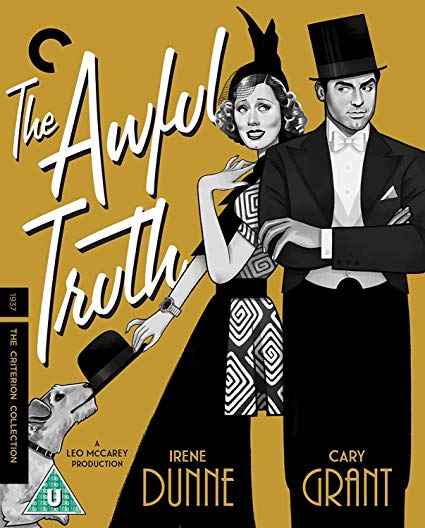
In autumn 1937, The Awful Truth was released and became another huge success. RKO was finally convinced that Cary was a box-office draw and signed him for three pictures over the next two years. He would get $50,000 per movie, plus a percentage of each film’s profits. The Awful Truth received six Academy Award nominations, but as the only leading actor of the movie, Cary Grant was overlooked (Amazon.com, Amazon.co.uk).
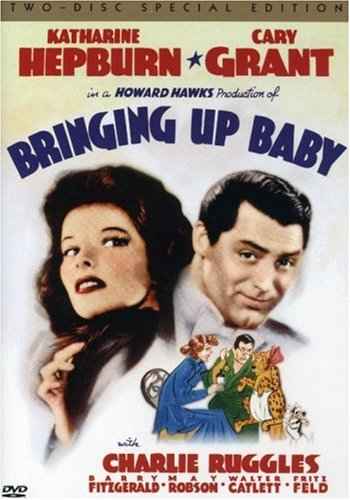

Bringing Up Baby was a screwball comedy, directed by Howard Hawks and with Katharine Hepburn as co-star, which added something extra to Cary Grant’s screen persona. The actor became confident about his success with the audience and the film helped to better define his screen identity. In 1938, Bringing Up Baby was a success with critics, but, astonishingly, it was not a commercial success then. Today, it is considered one of his best movies and one of the best screwball comedies of all time (Amazon.com, Amazon.co.uk, Amazon.de).
Gunga Din followed in 1938. During the filming, Cary’s mother, Elsie, was released from the asylum where she had been incarcerated since 1914. Gunga Din became RKO’s most profitable movie ever. When filming was finished, Grant went to meet his mother. On the ship returning from England, he was introduced to Barbara Hutton. Back in Hollywood, he resumed his relationship with Phyllis Brooks.
The next notable film was His Girl Friday, on which shooting started a few days after the outbreak of the Second World War (Amazon.com, Amazon.co.uk). It was directed by Howard Hawks and co-starred Rosalind Russell. Based on the 1928 newspaper play The Front Page by Ben Hecht and Charles MacArthur, the movie was a commercial success for Cary Grant. In the autumn of 1939, his relationship with his fiancée Phyllis Brooks ended. In May 1940, Cary met Barbara Hutton again and became a surrogate father to her son Lance. At that time, she and her friends were investigated because of their contacts with Nazi Germany. Some of Cary’s film friends were considered Communists by the FBI. Therefore, Grant himself came under scrutiny but there were no dark secrets.
Grant’s next success was The Philadelphia Story, filmed in 1940 and released in the first week of 1941 (Amazon.com). Once more, he was one of the few working on the film who did not get an Academy Award nomination. Also in 1940, Cary shot the drama Penny Serenade with Irene Dunne and finally got his long-deserved Oscar nomination.
Another movie released in 1941 was Suspicion, directed by Alfred Hitchcock who wanted Grant to play a murderer. Hitchcock knew the audience would not expect him in such a role and, therefore, the effect would be huge. But the studio refused the plot with Cary as a cold and evil person. Therefore, the ending was changed. Still, Grant’s character was ambiguous and Suspicion was RKO’s biggest commercial success of 1941 and received several Academy Award nominations, but not for Cary Grant. Joan Fontaine won the Best Actress Oscar.
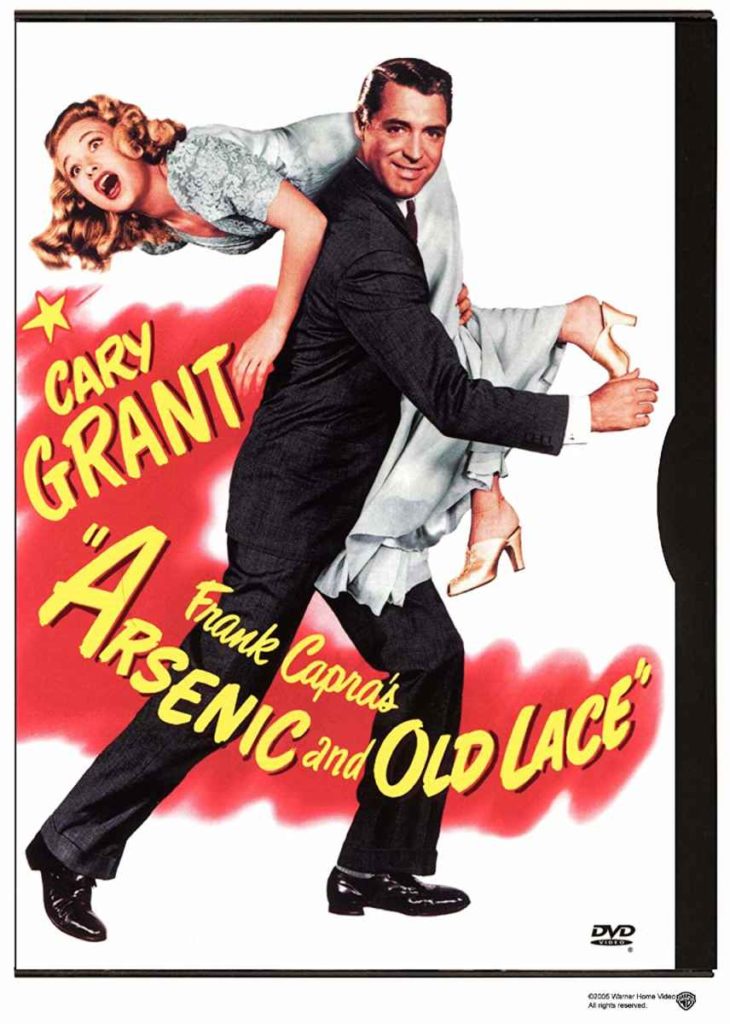
In autumn 1941, Grant shot the black comedy Arsenic and Old Lace, based on the popular Broadway play. It is one of my favorite movies (Amazon.com, Amazon.co.uk, Amazon.de). McCann takes it as the example of his movies of the 1940s “which best captured the way in which his commercial and creative concerns sometimes contradicted each other.” Arsenic and Old Lace was a success with the public as well as with the critics. Grant “should have been pleased with it, but he was not.” He had wanted to work with director Frank Capra. Cary wanted a more expressive, dramatic comedy, but he felt that Capra did not understand his comic style and regarded it as his worst performance (?!).
In December 1941, he legally changed his name to Cary Grant and applied for American citizenship, which was granted the following year. Also in 1942, Grant married the Woolworth heiress Barbara Hutton. After three tempestuous years, they divorced – the couple were harshly dubbed “Cash and Cary”.
The Talk Of The Town, like Suspicion, was previewed with several different endings, since the director could not decide whether Cary should get the girl or not. It became both a commercial and critical success. Among the failures of those years were Once Upon A Time and None But The Lonely Heart, both released in 1944. The second film “was probably the most personal project that he would ever be involved in.” The story became a gesture towards his own roots.
Night and Day was the story of Cole Porter, who had personally chosen Grant for the leading role. Director Michael Curtiz and and Cary argued constantly, critics were harsh but the audience loved it. Night and Day was Grant’s biggest commercial success up to then.

In 1946, the romantic thriller Notorious with Ingrid Bergman was shot (Amazon.com, Amazon.co.uk, Amazon.de). When the actress left her husband and first child for the Italian director Roberto Rossellini, with whom she soon became pregnant, she was subsequently blacklisted by Hollywood. Among the few to stand with her was Grant. When Ingrid Bergman won an Oscar in 1957 for her performance in Anastacia, she asked Cary to accept it on her behalf. She said: “For years [Cary] was the only one in Hollywood who ever contacted me… I had done nothing wrong in his eyes.”
In 1947, Cary had another hit with The Bachelor and The Bobbysoxer. The following year, he and his love Betsy Drake traveled to Germany, where Cary was to shoot the screwball comedy I Was A Male War Bride, directed by Howard Hawks. Grant was diagnosed with hepatitis, but continued working on the film. He lost some 30 pounds, but after some recovery time, finished filming of I Was A Male War Bride, which became 20th Century Fox’s biggest hit of the year (Amazon.com). On Christmas Day 1949, the 45-year old Cary married his third wife, the 26-year old Betsy Drake. The marriage lasted until 1962, but it was a difficult relationship for much of that period.
In 1950, Crisis was a commercial flop. In 1951, People Will Talk was well received by the critics, but no box-office success. Among the notable movies of those years was 1952’s Monkey Business (aka Darling, I Am Growing Younger), where Grant played a character reminiscent of the one in Bringing Up Baby. Directed by Howard Hawks, with Ginger Rogers and Marilyn Monroe, did not become the huge success everyone involved had anticipated. Still, it is one of my favorite comedies (Amazon.com).
His wife Betsy had opened up Cary’s mind and he decided to put his marriage first. In 1953, he announced his retirement. In those years, Grant was in search of his identity. The problem was not Cary Grant, the film persona, but Archie Leach. With the help of the hallucinogenic drug lysergic acid diethylamide (LSD-25), he hoped to find answers to his questions, with the help of doctors. At the time, LSD was a government-licensed experiment. Not much was known then about its negative effects. In an interview in 1959, Grant for the first time publicly spoke out about the search for his self. Later, Cary avoided any further confessions. In the 1960s, when the dangers of LSD had become evident and the drug was banned in most states, Grant tried to distance himself from its use: “I wouldn’t dream of taking LSD now…”. Later in his life, he was less categorical. Did LSD change Cary Grant? McCann does not think so.
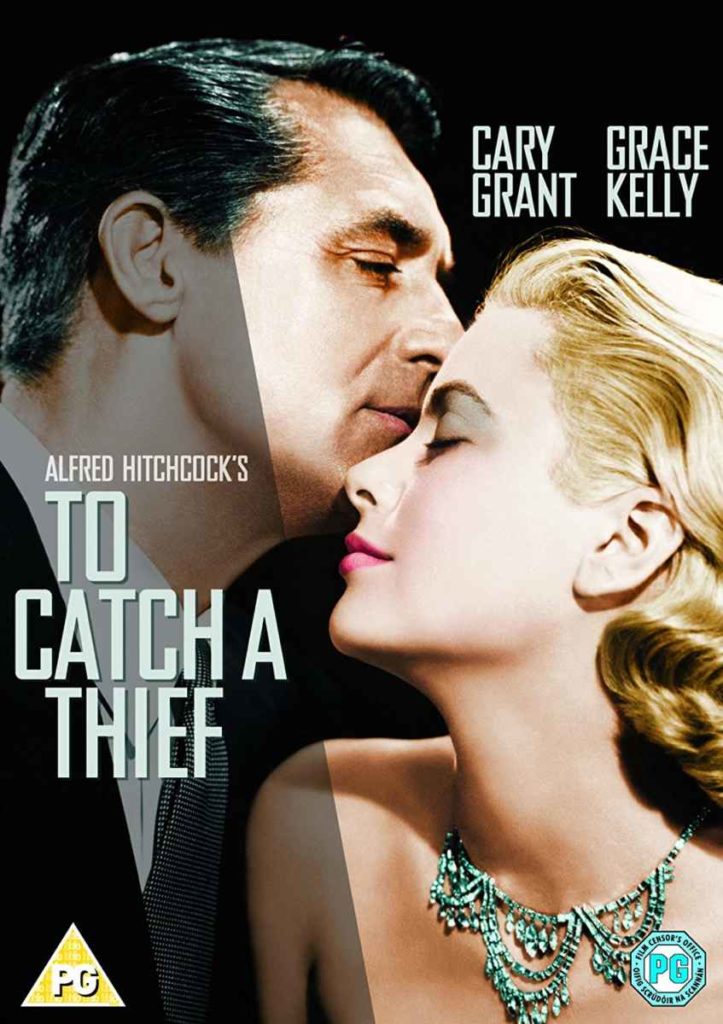
In 1954, Cary Grant came out of retirement with To Catch A Thief, filmed on the French Riviera, starring opposite Grace Kelly (Amazon.com, Amazon.co.uk). Hitchcock’s film was released in the autumn of 1955 and the comedy thriller was a commercial success. Grant was considered “the last romantic hero”. In 1958, he was at the top of the box-office poll of the most popular male star.
In 1956, he shot The Pride and The Passion with Sophia Loren, with whom he had an affair. At that time, Betsy was one of the survivors when her ship sank on its way back to the United States. According to some sources Sophia Loren turned down a marriage proposal from Cary Grant on the same day.
In 1957, An Affair To Remember was a success (Amazon.com), but Them For Me, directed by a Stanley Donen, was a flop with the critics and at the box-office. Houseboat was next, again with Sophia Loren. He proposed again, but she was committed to another man and he was still married to Betsy. Still in 1957, filming for Indiscreet by Stanley Donen and with Ingrid Bergman began (Amazon.com, Amazon.de). The following year, Cary made North By Northwest with Alfred Hitchcock, a success, both with the public and the critics (Amazon.com). One of his best movies.
In 1959 followed Operation Petticoat, co-starring Tony Curtis and directed by Blake Edwards. It was another hit, Universal’s biggest money-maker ever. Cary Grant himself made almost $4 million (Amazon.com).
This was the time of Grant’s LSD-coming out. He was sued by the journalist Hyams because he retracted from his story. Cary settled the dispute by agreeing to an autobiography written by Hyams and authorized by him. In 1960, based on a series of tape recordings, three articles were published in the Ladies Home Journal. Hyams was paid $125,000 and Grant got his share too.
In 1960, The Grass Is Greener was a flop. That Touch Of Mink, directed by Delbert Mann and co-starring Doris Day, was released in 1962 and became a box-office hit (Amazon.com, Amazon.de). The same year, Betsy filed for divorce, after other affairs by Cary. Dyan Cannon, his junior by 33 years, was Grant’s new flame.
In 1963, Cary last great film, Charade, was released. It broke the all-time opening week box office record (Amazon.com, Amazon.de). Father Goose came next. He played a heavy-drinking hermit. It smashed even Charade‘s opening week record.
In 1965, Grant married Dyan Cannon in Las Vegas. She was 26, he 61. The press only found out about it 11 days later. Carry and Dyan divorced in 1968.
In 1966 came Cary Grant’s last movie, Walk, Don’t Run. It was filmed in Japan while Dyan was pregnant. Cary’s first baby was on the way. Although Grant never officially announced his retirement, he seemed to be sure his screen career was over. In Walk, Don’t Run, he plays a fatherly figure. It was a commercial success.
Grant concentrated on his family. He called his daughter Jennifer his “best production”. His wife Cannon later spoke of her “Pygmalion relationship” with Grant. He advised her on clothes, make-up and career. Cary wanted to stay at home whereas Cannon preferred to socialize. They separated in 1967 and divorced in 1968. Dyan accused Grant of beating her and taking LSD. Grant was devastated and feared to lose his beloved daughter, but he was granted two months visiting rights per year without restrictions.
In 1968, Grant became a board member of Rayette-Fabergé, an even more accomplished businessman than before. But the highlight of his latter years came in 1970, when the Academy of Motion Picture Arts and Sciences finally awarded him an Oscar, the Special Oscar given only to the most illustrious and – as McCann rightly points out – “usually the most shamefully neglected” stars. Grant had been a critic of the Academy as well as of the Hollywood system.
In 1973, Elsie Grant died at the biblical age of 95. In 1974, Cary was appointed to the board of Directors of Western Airlines and, in 1975, he was made a director of MGM. Among his other activities was his support of the World Wildlife Fund and Variety Clubs International.
By the mid-1970s, Grant began a serious relationship with Maureen Donaldson, a 26-year old entertainment journalist and photographer from England. It ended in 1977, when she left him for Warren Beatty.
In 1976, Grant met Barbara Harris, the public relations officer at London’s Royal Lancaster Hotel where Fabergé held its annual trade show. After two years of friendship, Harris and the 46-year older Grant began to plan a common future. They married in 1981. Grant’s only daughter Jennifer was present.
In 1981, Grant was approached by Nancy Nelson, the senior vice-president of a New York lecture bureau, with the idea of a lecture tour intitled “An Audience With…”. Grant finally agreed and, from 1982 to 1986, made 36 public appearances in which he answered questions from the audience. He was very professional and it turned out a huge success. On November 29, 1986, on the lecture tour, Cary Grant died of a stroke.
His daughter Jennifer dropped out of her final year at Stanford and enrolled in an acting class. Later, she got a regular part in TV series Beverly Hills 90210. Other jobs included guest spots in Friends & Ellen, a role in the film Evening Star and a part in the TV sitcom Movie Stars.
Cary Grant had a “movie career which lasted for over three decades; even in the year of his retirement, the Motion Picture Association of America voted him the leading box-office attraction. There was no decline, no fall from fashion. He was an exceptionally and enduringly popular star”, equally liked by men and women.
Cary Grant was extraordinary in the sense that his accent was “neither West Country nor West Coast, neither English nor American, neither common nor cultured, strangely familiar yet intriguingly exotic…”
Graham McCann sums up the essence of Cary Grant in his Prologue: “Cary Grant did not exist, he was invented by Archie Leach who did not know who he was, but who knew what he liked – and that’s what he came to think of as Cary Grant, a man from dream city, of gentlemanly grace, classless and self-assured, at home in the world of music halls as well as with the high society. Whereas “not even Archie Leach was ever very sure about who Archie Leach was supposed to be.”
Cary Grant managed to keep his privacy and “lived much of his life on screen… making us believe in Cary Grant… When he retired, he withdrew from view.” There were no comebacks, no kiss-and-tell memoirs, no talk-shows, no authorized biographies. He was “a glorious enigma”, eluding classification. In short: Cary Grant was “a class apart”.

This article is based on Graham McCann’s book Cary Grant – A Class Apart. Paperback, Columbia University Press, New York, 1997 (hardcover; 1998 for the paperback edition), 348 pages. The biography does not cover all details of his life and career, overlooks some lovers and darker sides of Cary Grant as well as some films, but is easy to read and quite objective. Order the biography from Amazon.com, Amazon.co.uk, Amazon.de, Amazon.fr.